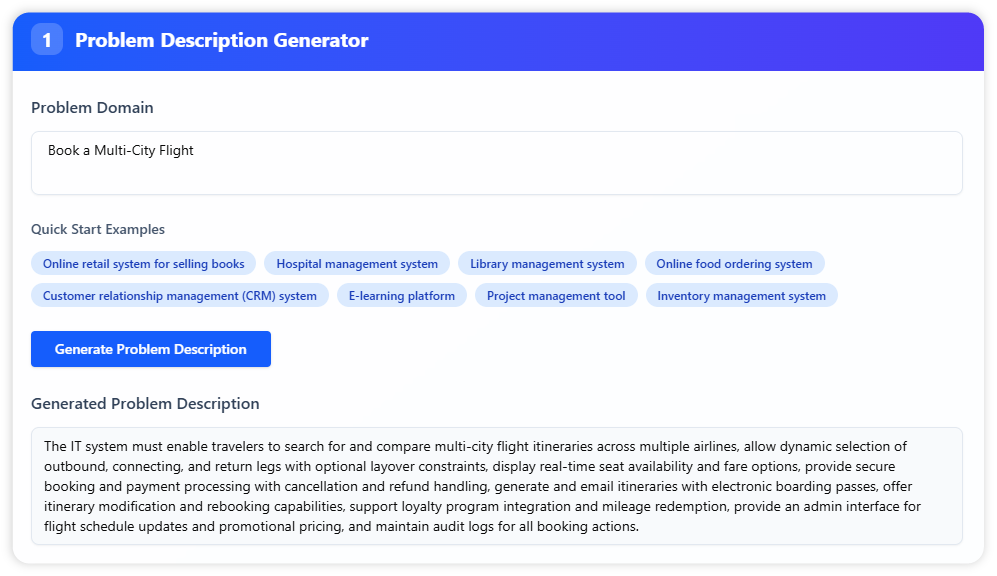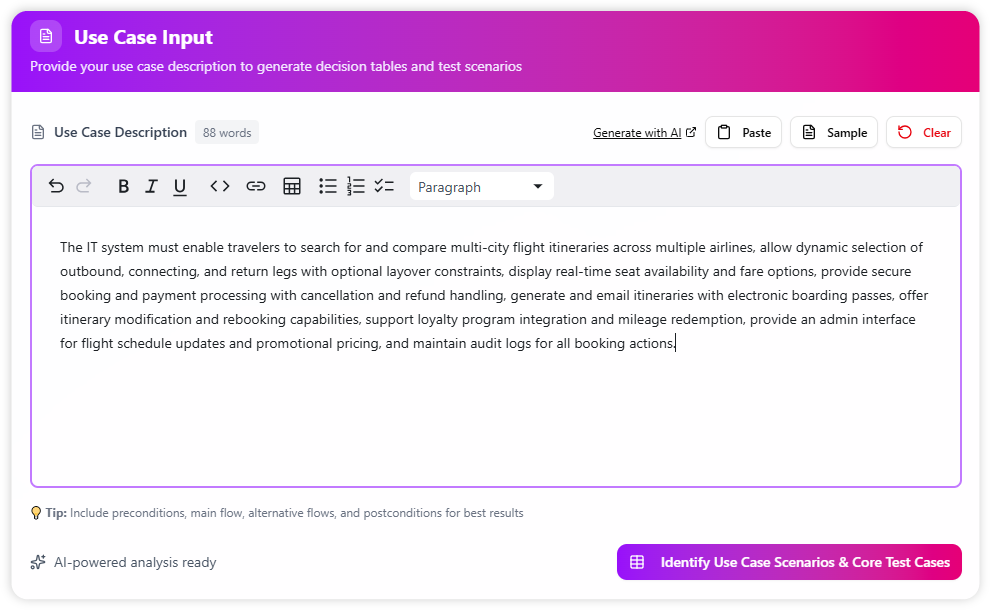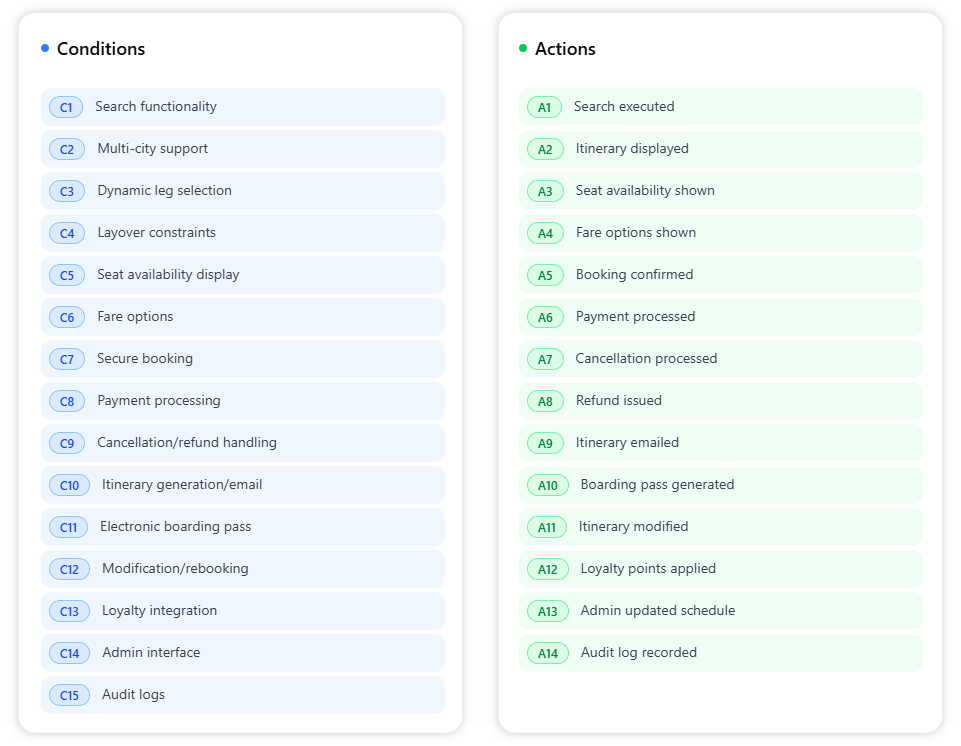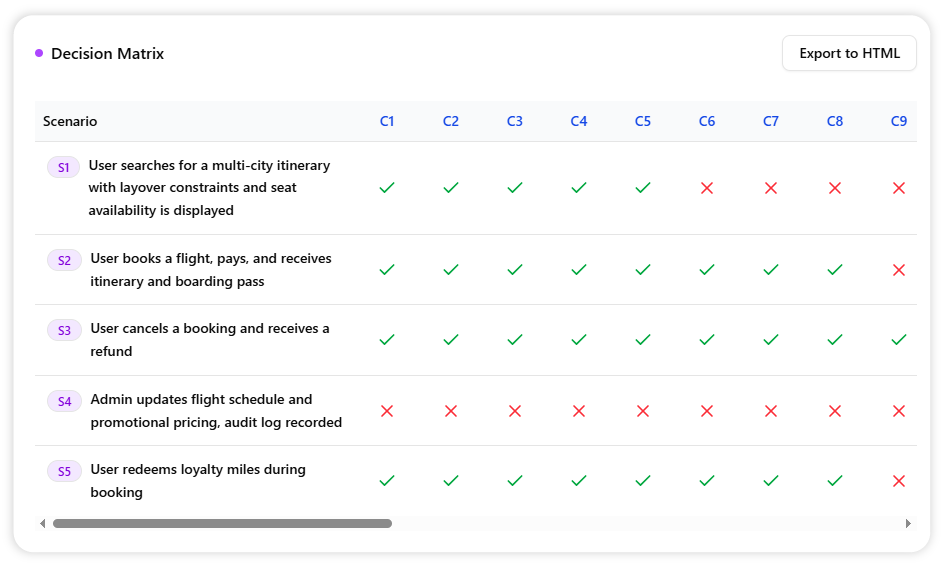Now Reading: Use Case Scenario Example: Analyzing a Multi-City Flight Booking
-
01
Use Case Scenario Example: Analyzing a Multi-City Flight Booking
Use Case Scenario Example: Analyzing a Multi-City Flight Booking
Provide the Use Case Description
First, we feed the AI a detailed use case description. For the best results, include preconditions, main flows, and alternative flows. This rich context helps the AI deliver a more accurate and comprehensive analysis. You can also generate a high-quality description using our AI Use Case Description Generator.

Initiate the Analysis
With the description in place, simply click the “Identify Use Case Scenarios & Core Test Cases” button. Our AI engine will then parse the text to understand its logical structure.

Review the AI-Generated Results
In moments, the AI produces a complete analysis. It automatically extracts all relevant Conditions and Actions, presenting them as clear, easy-to-read lists. The most powerful output is the Decision Matrix, which maps every scenario to its specific conditions and outcomes.

Export and Share
Finally, click Export to HTML to save a standalone copy of the analysis. This makes it easy to share with your team, attach to project documentation, or use as a basis for writing formal test cases.

What’s Next?
With this detailed analysis, you have a solid foundation for the next phases of your project. You can now:
Build a Testing Plan
Use this matrix to structure a comprehensive QA test plan, prioritizing edge cases like price changes.
Create User Stories
Convert each scenario into a user story for your product backlog to guide development.
Enhance User Flows
Visualize the identified alternative flows to design clearer error messages and recovery paths.
Estimate Time
Provide developers with a clear scope of work to ensure more accurate time and resource estimates.

